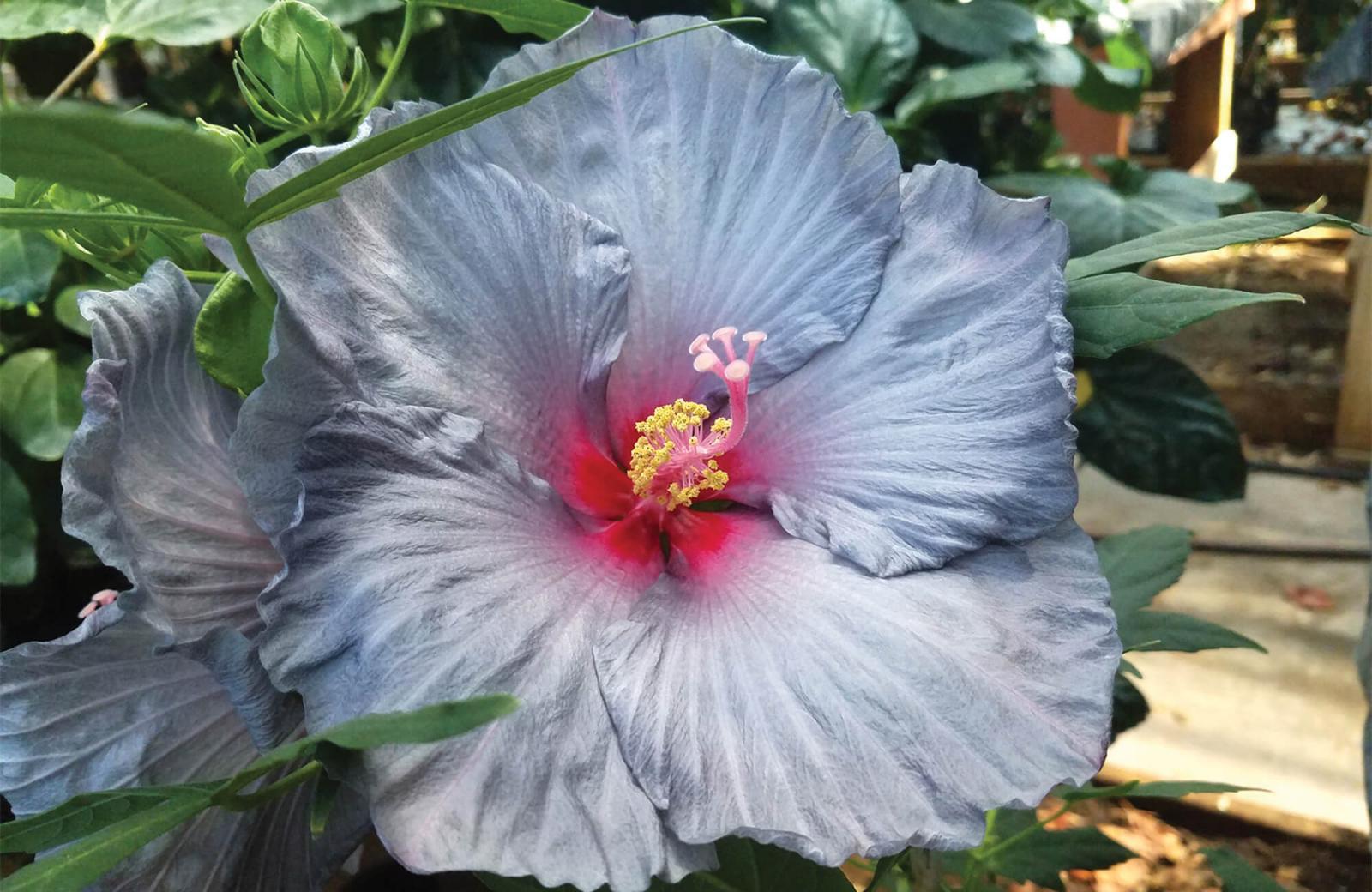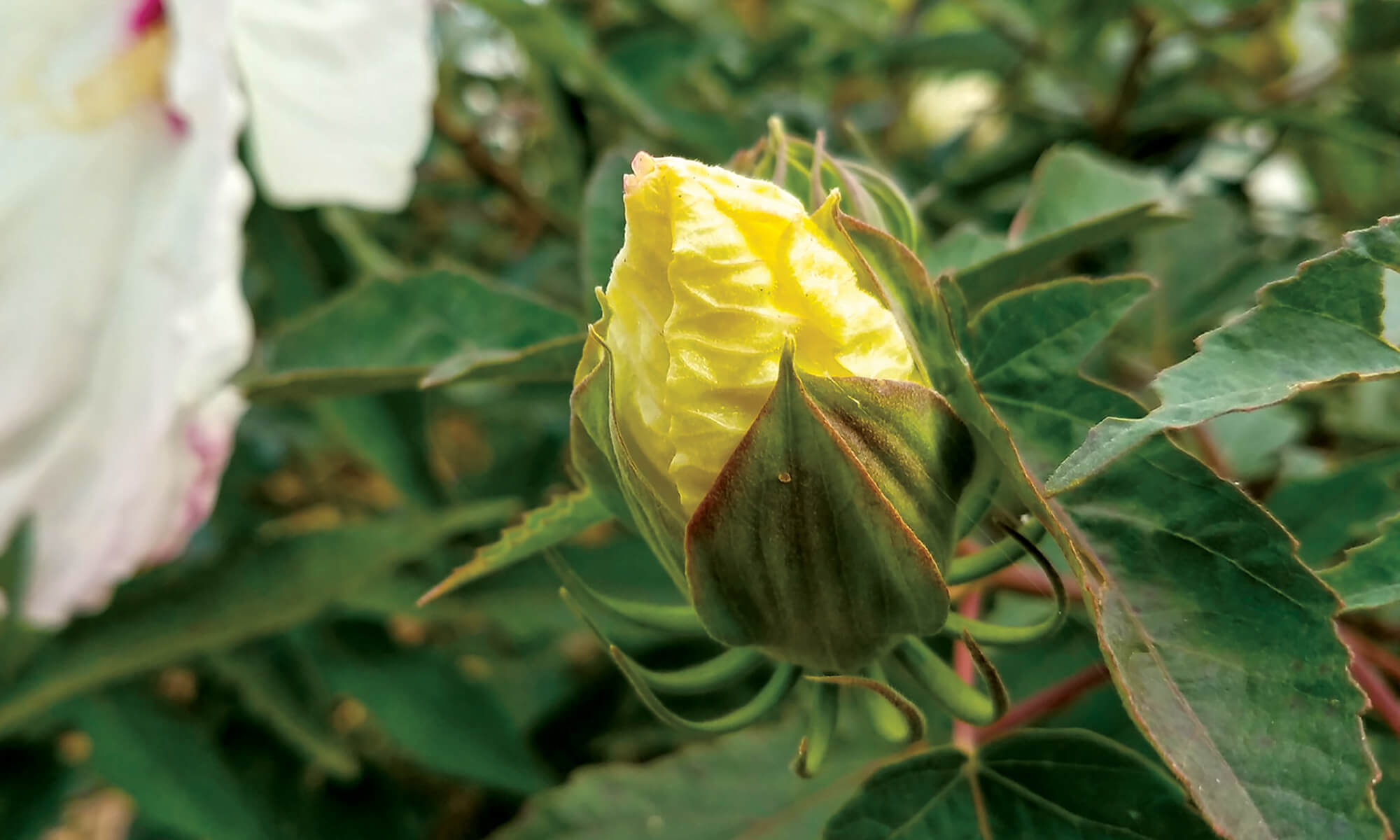October 5, 2023

Blue hibiscus
Crossing a new frontier in hardy hibiscus breeding
PHOTOS BY DARIUSZ MALINOWSKI
After the breakthrough achievements of creating blue and maroon flower colours in hardy hibiscus, plant physiologist and breeder Dariusz Malinowski, Ph.D., has now developed the first-ever coral-coloured hibiscus.
Malinowski leads the forage and ornamental plant breeding program, focusing on perennial cool-season forage grasses and hardy hibiscus at the Texas A&M AgriLife Research and Extension Center at Vernon. He is also a professor in the Texas A&M College of Agriculture and Life Sciences Department of Soil and Crop Sciences.
The coral-coloured hibiscus is the latest creation from what started as a hobby for Malinowski in 2005 and has grown to the point that Vernon is now considered the Hibiscus Capitol of Texas.
“This new hibiscus hybrid is the latest example of how Dr. Malinowski’s work has put the Texas A&M AgriLife Center here in Vernon at the forefront of hibiscus breeding,” said Rick Vierling, Ph.D., director of the Texas A&M AgriLife Research and Extension Center at Vernon and director of Texas A&M AgriLife Foundation Seed. “Dr. Malinowski’s releases have generated tremendous excitement worldwide, and we’re glad to have hibiscus breeding as a cornerstone program of the center.”
Malinowski began breeding hardy hibiscus with the help of Steve Brown, the former director of Texas A&M AgriLife Foundation Seed, who saw a big potential for commercialization of Malinowski’s hibiscus hybrids. This hobby and passion became a research program at the Texas A&M AgriLife Center in 2010.
Making a name with the blues
A decade later, Malinowski is well known in the ornamental plant industry thanks to his extraordinary ability to create “out of this world” novel flower colours in hardy hibiscus. His first “bluish” flowered hibiscus, Blue Angel, was released in 2012, only two years into the life of the hibiscus breeding program.“My ultimate goal is to create a sky-blue flower on a plant with dark foliage,” Malinowski said. “Combining these two traits in one plant has been very difficult. For instance, a recently created blue-flowering hibiscus hybrid with attractive, darker foliage consists of over 60 parental ancestors originating from four hibiscus species, and more parents are still being hybridized with this plant.”
“We have made tremendous improvement in the expression of the blue pigment and plant growth habit since the release of Blue Brulee and Cordon Bleu,” Malinowski said. “When I first mentioned my dream of creating a blue-flowering hibiscus to Steve Brown, he just laughed. But I knew he had high hopes for me and believed I could do that.”
Although Malinowski introduced many novel colours since the release of Blue Angel winter-hardy hibiscus, including magenta, silver, maroon, purple, “blue metallic,” and dual and multicoloured flowers, the next frontier was to create orange- and yellow-blooming hibiscus hybrids.
 The coral-coloured hardy hibiscus is the latest colour developed by Dariusz Malinowski.
The coral-coloured hardy hibiscus is the latest colour developed by Dariusz Malinowski.Tackling the elusive oranges
“I knew that creating orange and yellow pigments in hardy hibiscus flowers would be much more difficult than the blue pigment because there were no candidate parents with even remotely promising flower colours,” Malinowski said.He decided to focus on the orange colour first, and that was the beginning of the coral colour.
“Among our 20,000-plus experimental plants, I noticed a couple of plants with distinctive hues of red, shifting into coral tones,” Malinowski said.
After a few hybridization cycles, he developed a hybrid with pinkish-coral hues. That was the beginning of his new dream, just like Blue Angel a decade before.
Using a “gene stacking” method, Malinowski said he spent a couple more years hybridizing parental plants expressing similar flower colours and exposing seeds to electromagnetic radiation to finally discover one plant with the illusive, dark coral colour.

The last frontier — yellow
The last frontier in Malinowski’s research plan is to develop yellow-flowering hardy hibiscus.“This may be the most challenging goal, as yellow pigment does not occur in this and related species of rose mallows,” he said.
Malinowski said there are two hardy hibiscus cultivars on the market with a light, creamy flower colour, Old Yella and New Old Yella, but they are not the true yellow he is looking for.